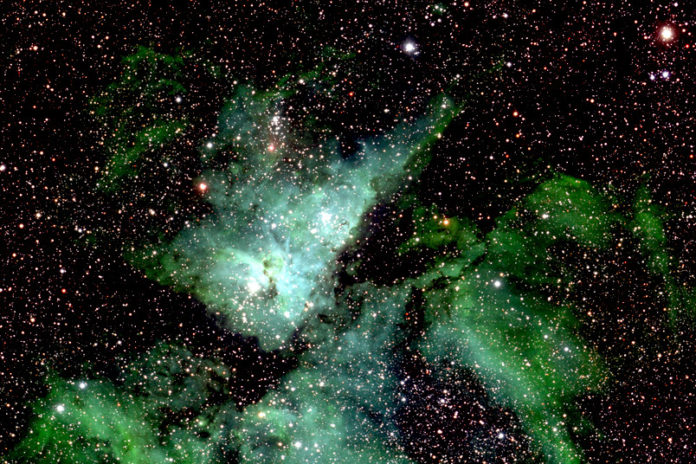A collaborative team of scientists has recently determined the behavior of acids in ultracold interstellar space.
Particularly focusing on hydrochloric acid (HCl), scientists used spectroscopic analyses and computer simulations to investigate if the acid does or does not release its proton in conditions like those found in interstellar space. The answer was neither yes nor no, but instead depended on the order in which the team brought the water and hydrochloric acid molecules together.
Martina Havenith, Speaker for the Cluster of Excellence Resolv said, “We would like to know whether the same acid-alkali chemistry as we know on Earth also exists in the extreme conditions in interstellar space. The results are crucial for understanding how more complex chemical molecules formed in space – long before the first precursors of life came into existence.”
To reproduce the incredibly low temperatures in the lab, scientists had the chemical reactions take place in a droplet of superfluid helium. They observed the procedures utilizing a special type of infrared spectroscopy, which can distinguish sub-atomic vibrations with low frequencies.
A laser with particularly high brightness, accessible in Nijmegen, was required. Computer simulations empowered the researchers to translate the trial results.
Scientists primarily added four water molecules, one after the other, to the hydrochloric acid molecule. The hydrochloric acid dissociated during this process: it donated its proton to a water molecule, and a hydronium ion was created. The remaining chloride ion, the hydronium ion, and the three other water molecules formed a cluster.
However, if the researchers first created an ice-like cluster from the four water molecules and then added the hydrochloric acid, they yielded a different result: the hydrochloric acid molecule did not dissociate; the proton remained bonded to the chloride ion.
Professor Martina Havenith, Chair of Physical Chemistry II from Ruhr-Universität Bochum, said, “Under the conditions that can be found in interstellar space, the acids are thus able to dissociate, but this does not necessarily have to happen – both processes are two sides of the same coin, so to speak.”
Professor Dominik Marx, Chair of Theoretical Chemistry from Ruhr-Universität Bochum, said, “The result can also be applied to other acids, i.e., it represents the basic principle of chemistry under ultracold conditions.”
“Chemistry in space is by no means simple; it might even be more complex than chemistry under planetary conditions.”
“After all, it depends not only on the mixing ratios of the reacting substances but also on the order in which they are added to each other. This phenomenon needs to be taken into consideration in future experiments and simulations under ultracold conditions.”
The group led by Professor Martina Havenith, Chair of Physical Chemistry II, and Professor Dominik Marx, Chair of Theoretical Chemistry, from Ruhr-Universität Bochum, together with the team led by Dr. Britta Redlich from Radboud University, Nijmegen, describes the results in the journal Science Advances, published online in advance on 7 June 2019.
Journal Reference
- Devendra Mani, Ricardo Pérez de Tudela, Raffael Schwan, Nitish Pal, Saskia Körning, Harald Forbert, Britta Redlich, A. F. G. van der Meer, Gerhard Schwaab, Dominik Marx, Martina Havenith. Acid solvation versus dissociation at “stardust conditions”: Reaction sequence matters. Science Advances, vol 5, Issue 6 DOI: 10.1126/sciadv.aav8179
